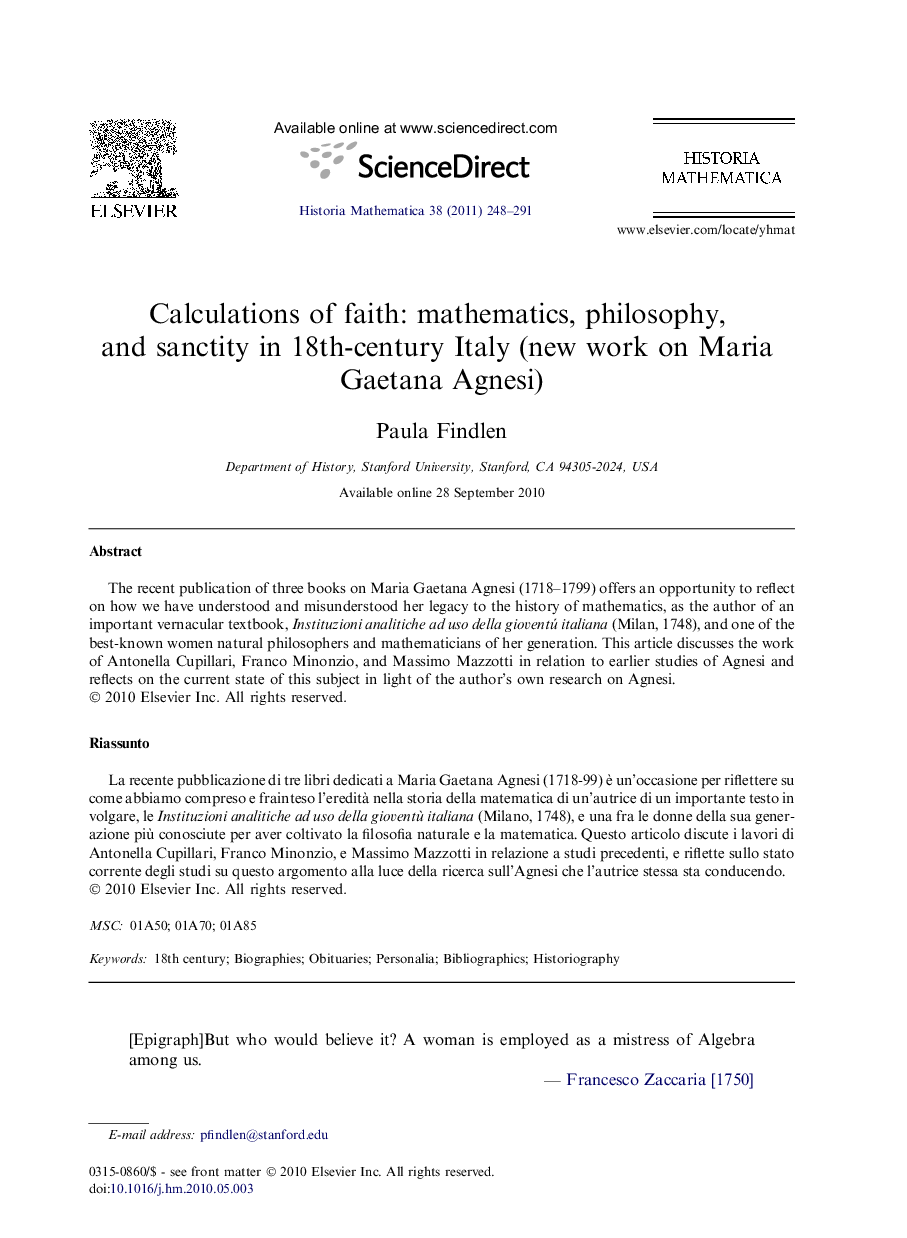| کد مقاله | کد نشریه | سال انتشار | مقاله انگلیسی | نسخه تمام متن |
|---|---|---|---|---|
| 1158586 | 959370 | 2011 | 44 صفحه PDF | دانلود رایگان |

The recent publication of three books on Maria Gaetana Agnesi (1718–1799) offers an opportunity to reflect on how we have understood and misunderstood her legacy to the history of mathematics, as the author of an important vernacular textbook, Instituzioni analitiche ad uso della gioventú italiana (Milan, 1748), and one of the best-known women natural philosophers and mathematicians of her generation. This article discusses the work of Antonella Cupillari, Franco Minonzio, and Massimo Mazzotti in relation to earlier studies of Agnesi and reflects on the current state of this subject in light of the author’s own research on Agnesi.
RiassuntoLa recente pubblicazione di tre libri dedicati a Maria Gaetana Agnesi (1718-99) è un’occasione per riflettere su come abbiamo compreso e frainteso l’eredità nella storia della matematica di un’autrice di un importante testo in volgare, le Instituzioni analitiche ad uso della gioventù italiana (Milano, 1748), e una fra le donne della sua generazione più conosciute per aver coltivato la filosofia naturale e la matematica. Questo articolo discute i lavori di Antonella Cupillari, Franco Minonzio, e Massimo Mazzotti in relazione a studi precedenti, e riflette sullo stato corrente degli studi su questo argomento alla luce della ricerca sull’Agnesi che l’autrice stessa sta conducendo.
Journal: Historia Mathematica - Volume 38, Issue 2, May 2011, Pages 248–291